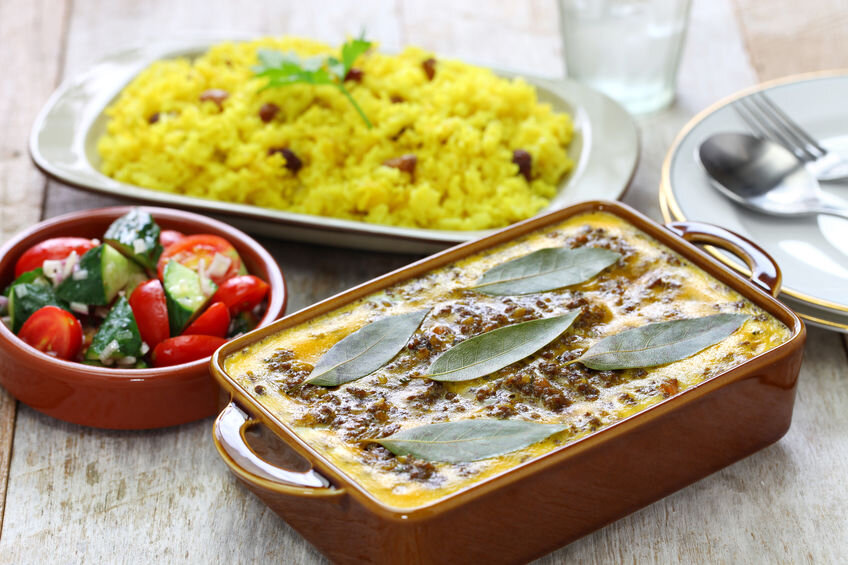Raisins
Exceptional bulk raisins for wholesalers, distributors, suppliers and importers
Raisins: a short introduction
The vine has been a prolific crop in the East Mediterranean area for millennia. Grapes are harvested from August to early October, and in order to keep, and produce commercially, they have to be dried. Raisins are rich in dietary fiber, have a low glycemic index, and minerals like copper and iron. They are recommended as a daily snack for weight control, as they are low in fat, help the control of glucose, digestive function, and the regulation of blood. Raisins contribute in treating anemia caused by iron deficiency.
Sometimes, sulphur dioxide is applied to raisins after pre-treatment, and before drying, to decrease the rate of browning, preserve flavor, and prevent the loss of certain vitamins during the drying process.
Dried raisins are produced all around the world. They come in different sizes, and many colors, from blue-black to light yellow, depending on the grape variety. Their contribution to cultural global gastronomy is immense.
NUTRITIONAL FACTS
Raisins belongs to the dried fruit family and stand out for their excellent benefits to human health. The high nutritional value of raisins, due to their natural sugars and their manganese and magnesium content, feeds the body with high amounts of energy and contributes to the mobilization of the neuromuscular system. This is why raisins are an ideal pre-training snack for athletes.
Raisins offer significant amounts of zinc, potassium, phosphorus, iron and a high concentration of antioxidants. Raisins are rich in flavonoids, anthocyanins and resveratrol, ingredients proven to contribute to heart protection. Furthermore, international scientific literature shows that these ingredients have anti-cancer, anti-microbial and anti-allergic properties. As a result, increased consumption has been associated with improving the antioxidant properties of the body, which may contribute to reducing the risk of chronic oxidative stress-related diseases.
Products
Below list of common types of raisins:
Thompson Seedless Raisins: These are the most common variety of raisins, made from Thompson Seedless grapes. They are typically sun-dried for several weeks, which gives them a dark brown color.
Golden Raisins: These are made from Thompson Seedless grapes, but they are treated with sulfur dioxide to preserve their light color, and then dried in large dehydrators. They have a sweet flavor and are often used in baking.
Sultanas: Sultanas are a specific type of golden raisin, originally from Turkey. They are made from Sultana grapes (also known as Thompson Seedless), are slightly sweeter and juicier than other varieties, and have a golden color.
Currants: Despite the name, currants are actually tiny raisins made from the Black Corinth grape. They are seedless and have a tangy flavor.
Flame Raisins: These are large, dark red raisins made from Flame Seedless grapes. They have a sweet flavor and are often used in baking.
Each type of raisin has a unique flavor and texture, making them suitable for different culinary uses.
PACKAGING
Here are some common types of B2B packaging for raisins:
Bulk Boxes: These are large, sturdy cardboard boxes that are lined with a food-grade plastic bag. The bag is filled with raisins and then sealed. The box provides protection during transport and storage. Bulk boxes typically hold between 10 to 30 pounds (4.5 to 13.6 kilograms) of raisins.
Drums: For larger quantities, raisins may be packed in food-grade plastic or metal drums. These drums can hold up to several hundred pounds of raisins.
Super Sacks: Also known as bulk bags or flexible intermediate bulk containers (FIBCs), these are large bags made of flexible fabric, usually polypropylene. They are designed to hold large quantities of product, often up to 1,000 to 2,000 pounds (450 to 900 kilograms).
FARMING
Conventional Raisin Farming
Conventional raisin farming uses synthetic fertilizers and pesticides to maximize yield. It often involves mechanized equipment for tasks like pruning and harvesting. While this method can produce higher yields, it has been associated with environmental concerns such as soil degradation and water pollution.
Organic Raisin Farming
Organic raisin farming emphasizes sustainability and soil health. It avoids synthetic fertilizers and pesticides, instead using organic matter and natural pest control methods. Organic raisins are hand-harvested and sun-dried to maintain quality. While this method may yield less and be more labor-intensive, it is seen as more environmentally friendly. Organic raisins must meet specific certification standards.
HARVEST
The harvesting period for raisins/sultanas/currants can vary depending on the country and the specific climate conditions.
Here are the typical harvesting periods for the top producing countries:
Turkey: The harvest for grapes used in raisin and sultana production typically begins in late August and continues through September.
USA: In California, the grape harvest for raisin production usually starts in late August and can extend into September. The grapes are then left to dry in the sun for two to three weeks.
China: The grape harvest in China generally occurs from July to September, depending on the specific region and grape variety.
Iran: In Iran, grapes for raisin production are typically harvested from late July to September.
India: The grape harvest in India usually takes place from February to March. However, the exact timing can vary depending on the region and the specific variety of grape.
Please note that these are general time frames and the exact harvesting period can vary from year to year based on weather conditions and other factors.
Key Points
The chart provides a comprehensive view of the global production trends for these dried fruits over the years 2022/2023 and 2023/2024. Here are some key points derived from the chart:
Overall Decrease in Production: The chart shows a general decrease in production across most countries from 2022/2023 to 2023/2024. This is in line with the reported 5% global decrease in production due to weather challenges.
Stability in the USA and China: Despite the overall decrease, production in the USA and China remained stable or even increased. This is likely due to more favorable weather conditions in these regions compared to other major producers.
Significant Decrease in Turkey: Turkey, one of the major producers, shows a noticeable decrease in total supply from 370,000 metric tons in 2022/2023 to 365,000 metric tons in 2023/2024. This could be due to the adverse weather conditions, including heavy rains and high humidity, which have affected the crop yield.
Increase in South Africa: South Africa shows an increase in total supply from 70,130 metric tons in 2022/2023 to 80,000 metric tons in 2023/2024. This suggests that South Africa may have had more favorable growing conditions or improved production methods.
Steady Production in Other Countries: Countries grouped under "Others" maintained a steady production level across the two years. This could indicate a stable growing environment or consistent demand in these regions.
Lower Ending Stocks: The chart shows a slight decrease in ending stocks from 2022/2023 to 2023/2024, indicating that consumption may be outpacing production.
| Country | Total Supply 2022/2023 | Total Supply 2023/2024 | Percentage Difference |
|---|---|---|---|
| Turkey | 370,000 | 365,000 | -1.35% |
| China | 200,000 | 190,000 | -5% |
| USA | 226,000 | 250,000 | 10.62% |
| Iran | 183,000 | 180,000 | -1.64% |
| India | 145,000 | 147,000 | 1.38% |
| South Africa | 70,130 | 80,000 | 14.08% |
| Uzbekistan | 70,000 | 60,000 | -14.29% |
| Chile | 65,000 | 62,000 | -4.62% |
| Afghanistan | 28,000 | 28,000 | 0% |
| Argentina | 35,500 | 22,000 | -38.03% |
| Greece | 23,500 | 20,000 | -14.89% |
| Australia | 16,500 | 8,000 | -51.52% |
| Others | 20,000 | 20,000 | 0% |
TOP PRODUCING COUNTRIES
The top raisin/sultana/currant producing countries, along with their production numbers for the year 2023/2024:
Turkey: Turkey is the world's largest producer of raisins and sultanas. The country's favorable climate and fertile soil conditions make it ideal for viticulture. The Aegean region, in particular, is known for its high-quality sultana grapes. In 2023/2024, Turkey produced 365,000 metric tons of raisins/sultanas/currants.
USA: The United States, specifically California, is the second-largest producer of raisins in the world. The Central Valley of California provides an ideal climate for grape cultivation, with hot, dry summers and mild winters. The majority of the raisins produced in the U.S. are made from Thompson Seedless grapes. In 2023/2024, the USA produced 250,000 metric tons.
China: China is a major producer of raisins, particularly in the Xinjiang region, which has a dry and sunny climate ideal for grape growing. Chinese raisin production has been increasing in recent years due to the expansion of vineyard areas and improvements in drying techniques. In 2023/2024, China produced 190,000 metric tons.
Iran: Iran is one of the top producers of raisins, with vineyards primarily located in the regions of Qazvin, Takestan, and Bonab. The country is known for producing Sultana and Golden raisins, which are sun-dried and sulfur-dioxide treated respectively. In 2023/2024, Iran produced 180,000 metric tons.
India: India is a significant producer of raisins, with the majority of production taking place in the states of Maharashtra and Karnataka. Indian raisins, known as "kishmish" or "munakka" in local languages, are often used in traditional sweets and dishes. In 2023/2024, India produced 147,000 metric tons.
These numbers reflect the total supply of raisins/sultanas/currants for the year 2023/2024. Production can vary from year to year due to factors such as weather conditions, pests, and changes in farming practices.
TURKEY & THE USA PRODUCE HALF OF THE WORLDS RAISINS
Grapes on the vine
being dried to become raisins in turkey
Bobotie is south African Dish made with Raisins
Pancakes with banana & raisins









